
views
Focusing on Major Trigonometric Ideas
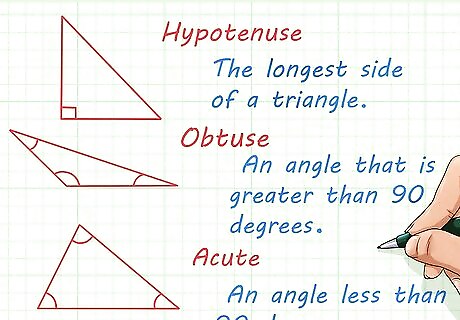
Define the parts of a triangle. At its core, trigonometry is the study of relationships present in triangles. A triangle has three sides and three angles. By definition, the sum of angles for any triangle is 180 degrees. You should familiarize yourself with triangles and triangle terminology to succeed in trigonometry. Some common triangle terms are: Hypotenuse ― The longest side of a right triangle. Obtuse ― An angle that is greater than 90 degrees. Acute ― An angle less than 90 degrees.
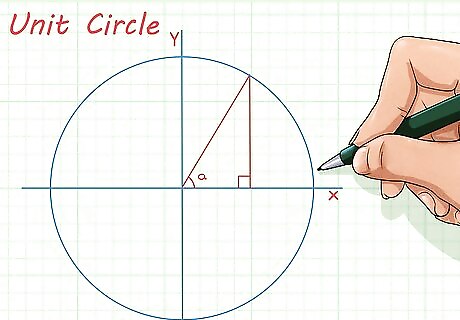
Learn to make unit circle. A unit circle allows you to scale any triangle so that the hypotenuse is equal to one. This is helpful because it relates trigonometric functions, like sine and cosine to percents. Once you understand the unit circle, you can use trigonometric values for a given angle to answer questions about triangles with those angles. Example 1: The sine of 30 degrees is 0.50. This means that the side opposite a 30 degree angle is exactly one half the length of the hypotenuse. Example 2: This relationship could be used to find the length of the hypotenuse in a triangle that has a 30 degree angle with the side opposite that angle measuring 7 inches. The hypotenuse would be equal to 14 inches.

Know the trigonometric functions. There are six functions that are central to understanding trigonometry. Together, they define the relationships within a triangle, and allow you to understand the unique properties of any triangle. These six functions are: Sine (Sin) Cosine (Cos) Tangent (Tan) Secant (Sec) Cosecant (Csc) Cotangent (Cot)

Conceptualize relationships. One of the most important things to understand about trigonometry is that all of the functions are interrelated. While values for Sine, Cosine, Tangent, etc. all have their own uses, they are most useful because of the relationships that exist between them. The unit circle scales these relationships down so that they are easily understood. Once you understand the unit circle, you can use the relationships it describes to model other problems.
Understanding the Applications of Trigonometry
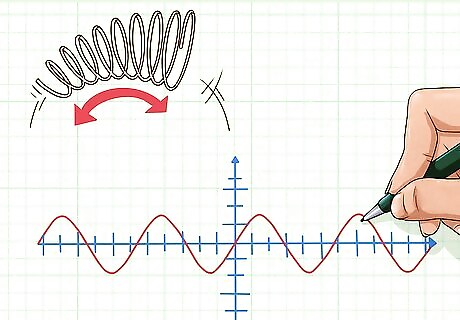
Understand basic uses of trigonometry in academia. Aside from studying trigonometry just for the love of trigonometry, mathematicians and scientists do apply these concepts. Trigonometry can be used to find the values for angles or line segments. You can also describe the any cyclical behaviors by graphing them as trigonometric functions. For example, the motion of a spring bouncing back and forth could be described by graphing it as a sine wave.

Think about cycles in nature. Sometimes, people struggle to grasp abstract concepts in mathematics or science. If you realize that those concepts are present in the world around you, they often take on a new light. Look for things in your life that occur in cycles and try to relate them to trigonometry. The moon has a predictable cycle that is roughly 29.5 days long.

Visualize how natural cycles could be studied. Once you realize that nature is full of cycles, start thinking about exactly how you might study those cycles. Think of what a graph of such cycles would look like. From the graph, you could formulate an equation to describe the phenomenon you observed. This will give trigonometric functions meaning to help you understand their uses. Think about measuring the tide on a given beach. During high tide it would be at some height, and then recede until it reaches low tide. From low tide, the water would move up the beach until it again reached high tide. This cycle would continue endlessly, and could be graphed as a trigonometric function, such as a cosine wave.
Studying Ahead of Time

Read the chapter. Trigonometric concepts are often hard for some people to grasp the first time around. If you read the chapter before going over it in a classroom, you will be more familiar with the material. The more times you see the material, the more connections you will make as to how different concepts in trigonometry are related. This will also allow you to identify any concepts that you struggle with before class.

Keep a notebook. Skimming through the book is better than nothing, but it isn’t the kind of in depth reading that will help you learn trigonometry. Keep detailed notes on the chapter you are reading. Remember that trigonometry is cumulative and the concepts build on each other, so having your notes from previous chapters can help you understand your current chapter. Also write down any questions that you want to ask the instructor.
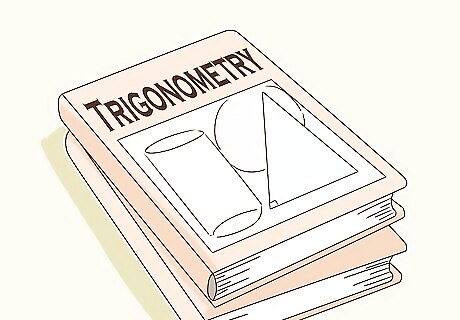
Work problems from the book. Some people visualize trigonometry well, but you also have to carry out the problems. To make sure that you really do understand the material, try working some problems before class. This way, if you have trouble, you’ll know exactly what you need help with in class. Most books have the answers to some problems in the back. This allows you to check your work.

Bring your materials to class. Bringing your notes and practice problems to class will give you a point of reference. This will refresh the things you understand, and remind you of any concepts you may need explained further. Be sure to clarify any questions that you listed during your reading.
Taking Notes in Class

Write in the same notebook. Trigonometric concepts are all related. It is best practice to keep all of your notes in one place so that you can refer back to earlier notes. Designate a specific notebook or binder to your trigonometry studies. You can also keep practice problems in this book.
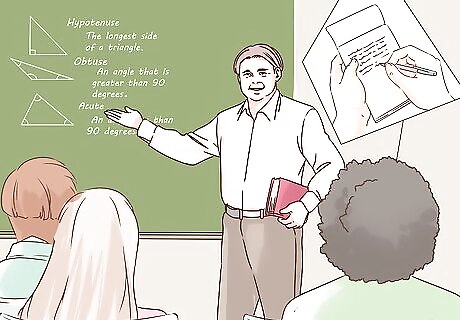
Make trigonometry your priority in class. Avoid using your class time to socialize or catch up on homework for another class. When you are in trigonometry class, you should be zeroed in on the lecture and practice problems. Write down any notes that the instructor puts on the board or otherwise indicates as important.

Remain engaged in class. Volunteer to solve problems at the board or share your answers to a practice problem. Ask questions if you don’t understand something. Keep communication as open and fluid as your instructor will allow. This will facilitate you learning and enjoying trigonometry. If your instructor prefers to lecture mostly uninterrupted, you can save your questions for after class. Remember it is the instructor’s job to help you learn trigonometry, so don’t be shy.

Follow up with more practice problems. Complete any homework assigned. Homework problems are good indicators of test questions. Make sure that you understand each problem. If no homework is assigned, work problems from your book that reflect the concepts covered in the most recent lecture.



















Comments
0 comment